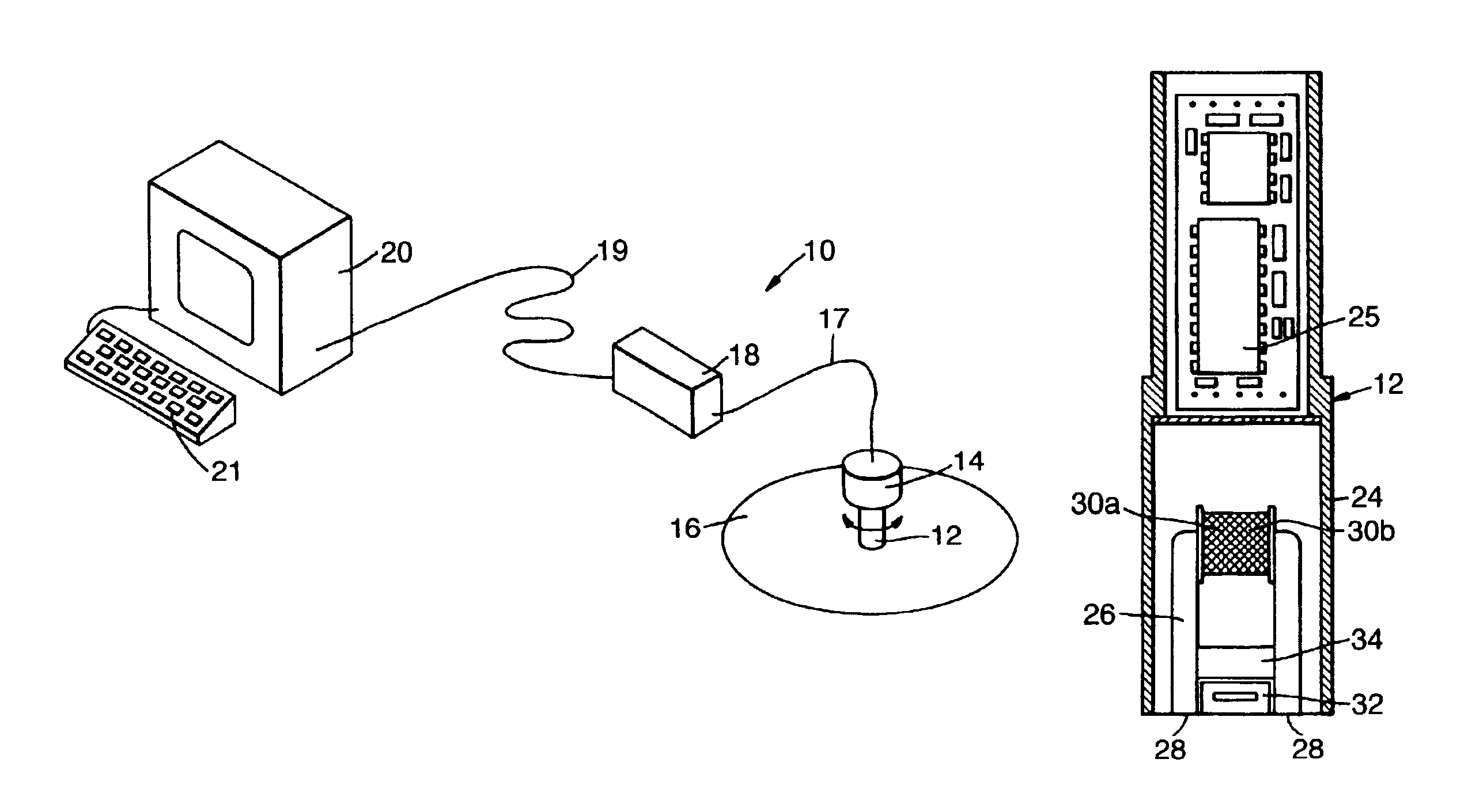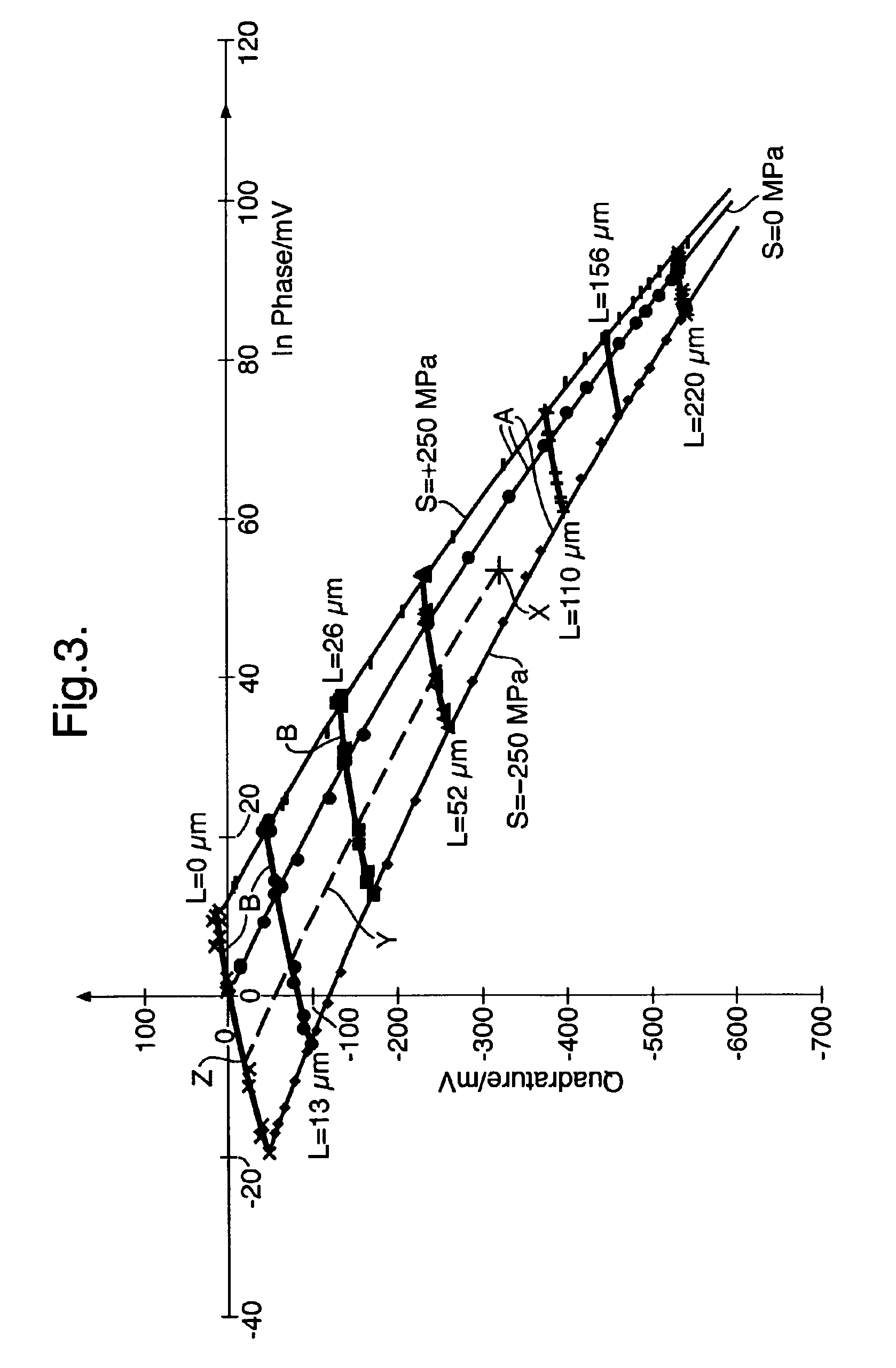Detection of rolling contact fatigue
a technology of rolling contact and fatigue, applied in the direction of instruments, using mechanical means, material magnetic variables, etc., can solve the problems of cracks, wheels or rails of railways, and stresses in structures such as rails, and achieve the effect of enhancing sensitivity to the onset of rolling contact fatigue and accurate determination of stress levels
- Summary
- Abstract
- Description
- Claims
- Application Information
AI Technical Summary
Benefits of technology
Problems solved by technology
Method used
Image
Examples
Embodiment Construction
[0021]The invention will be described with reference to an apparatus suitable for measuring the stresses in a ferromagnetic object, such as a rail. Referring to FIG. 1, a stress measuring apparatus 10 includes a sensor probe 12 comprising sensors for flux-linkage, flux-rotation and flux-leakage, the probe 12 being attached to an electric motor 14 which can be held by an operator, so the motor 14 can turn the probe 12 with one end adjacent to a surface of a steel object 16 in which the stress is to be determined. The sensor probe 12 and motor 14 are connected by a 2 m long umbilical cable 17 to a signal conditioning / probe driver unit 18. The unit 18 is connected by a long umbilical cable 19 (which may for example be up to 300 m long) to an interface unit within a microcomputer 20, which has a keyboard 21. Operation of the apparatus 10 is controlled by software in the microcomputer 20.
[0022]The interface unit within the microcomputer 20 generates sine and cosine functions at an angula...
PUM
| Property | Measurement | Unit |
|---|---|---|
| depth | aaaaa | aaaaa |
| alternating frequencies | aaaaa | aaaaa |
| alternating frequencies | aaaaa | aaaaa |
Abstract
Description
Claims
Application Information
 Login to View More
Login to View More - R&D
- Intellectual Property
- Life Sciences
- Materials
- Tech Scout
- Unparalleled Data Quality
- Higher Quality Content
- 60% Fewer Hallucinations
Browse by: Latest US Patents, China's latest patents, Technical Efficacy Thesaurus, Application Domain, Technology Topic, Popular Technical Reports.
© 2025 PatSnap. All rights reserved.Legal|Privacy policy|Modern Slavery Act Transparency Statement|Sitemap|About US| Contact US: help@patsnap.com



